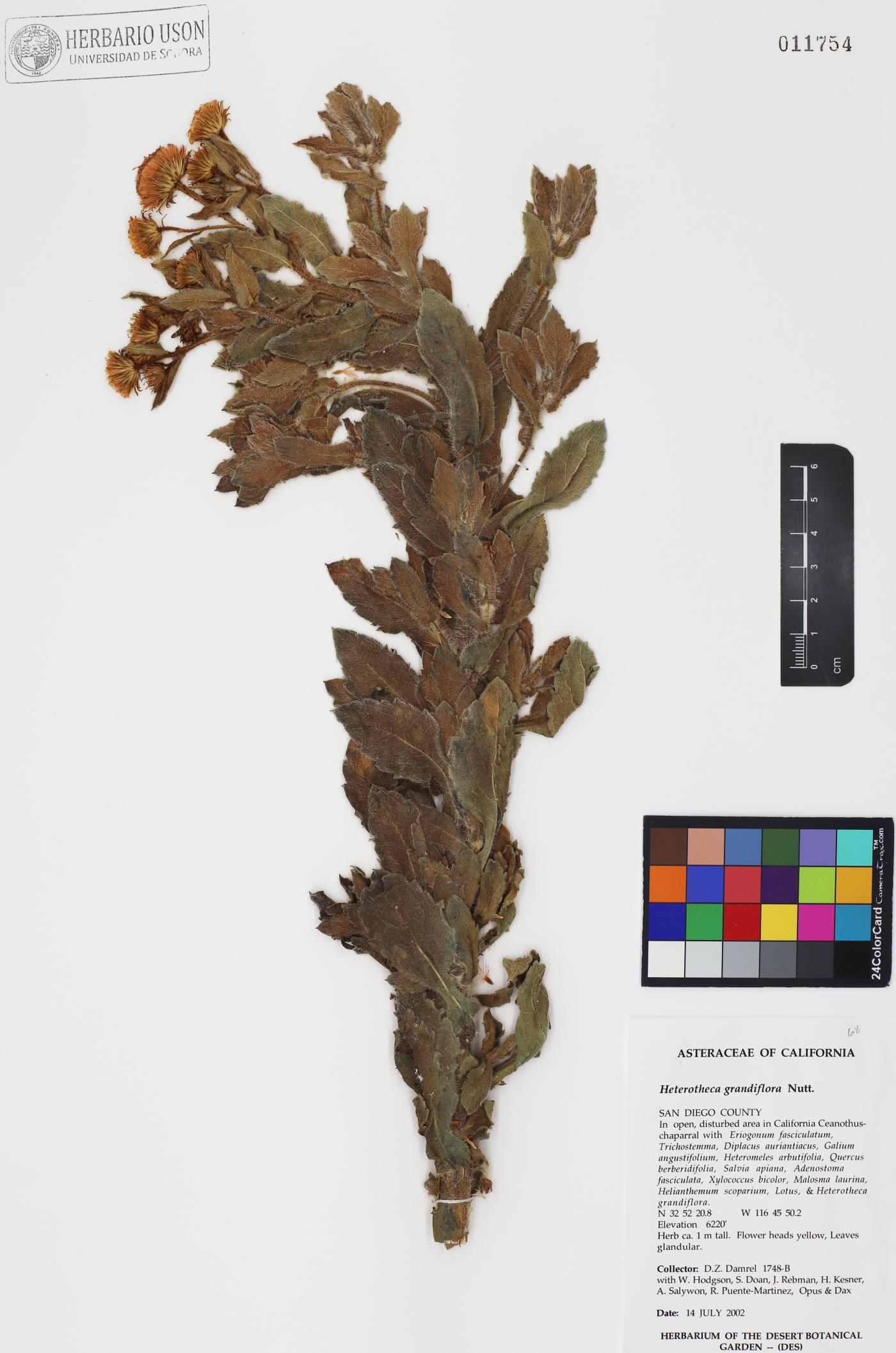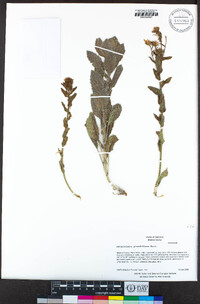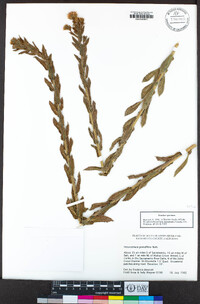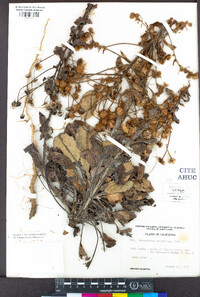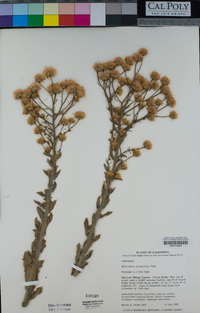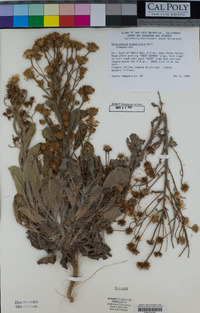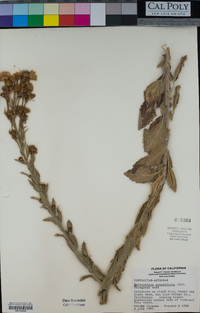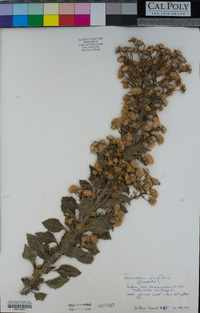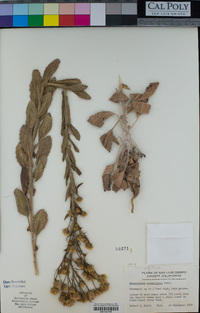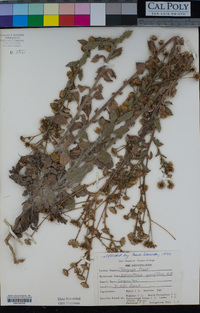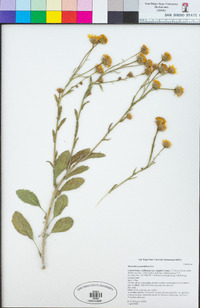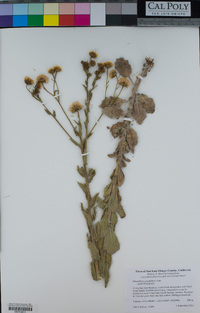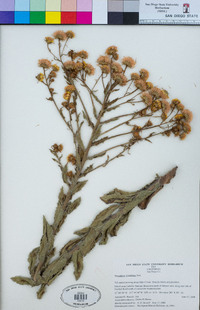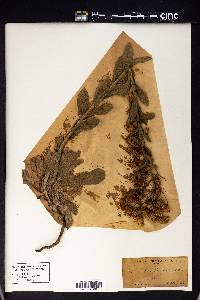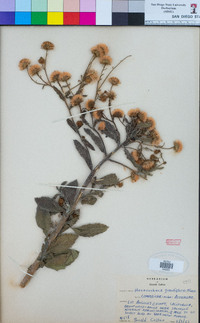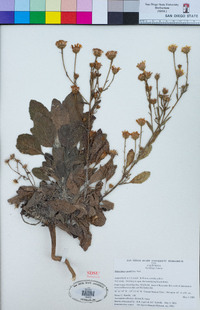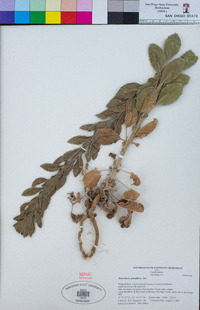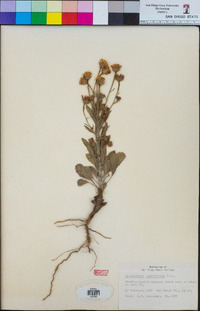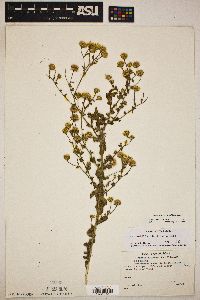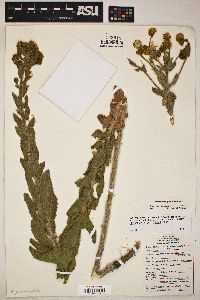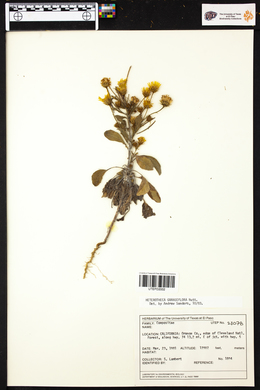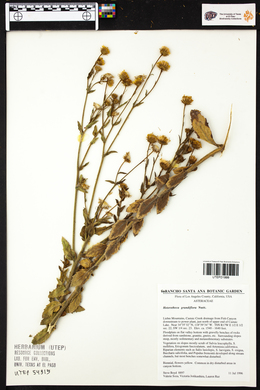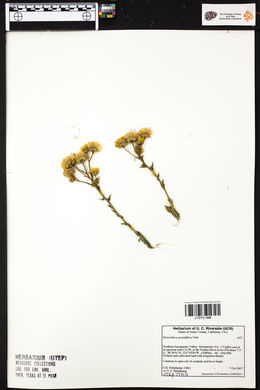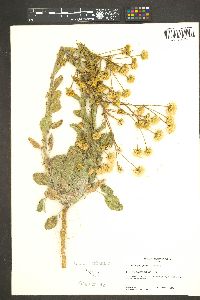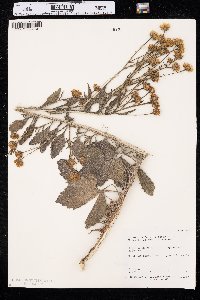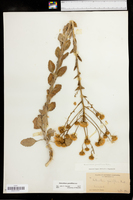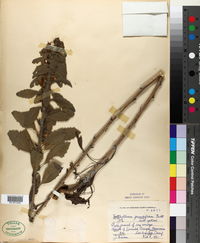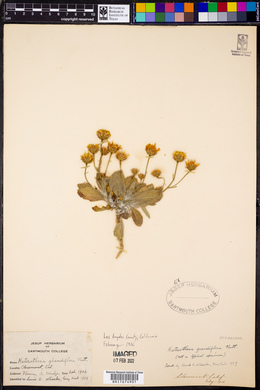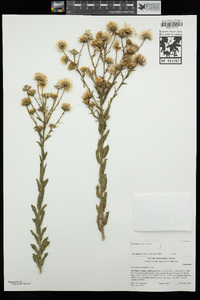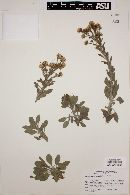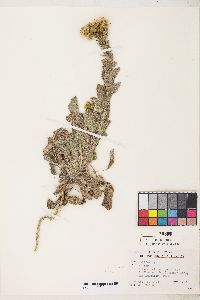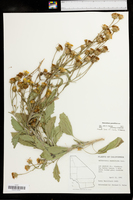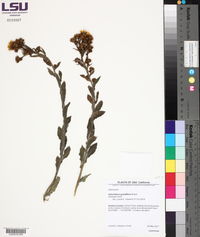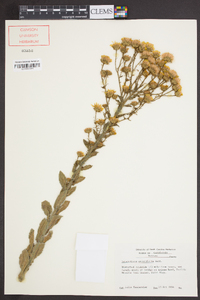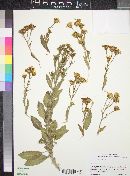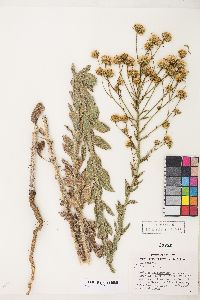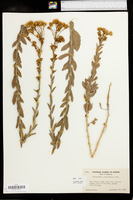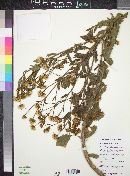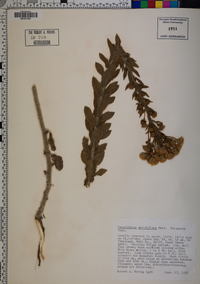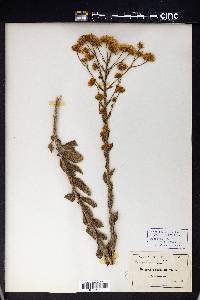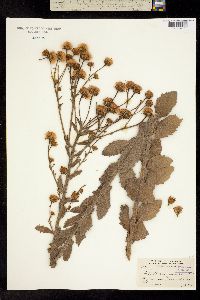Heterotheca grandiflora
|
|
|
|
Family: Asteraceae
Telegraph-Weed, more...telegraphweed, telegraph weed
[Heterotheca floribunda Benth.] |
Annuals, biennials, or short-lived perennials, 10-250 cm (atypical, spring-blooming, dwarf dune plants have short stems; perennating from proximal stem nodes in south; aromatic); taprooted. Stems 1-5+, ascending to erect (strict, 0.9-1.7 cm diam., only distal lateral branches developing in larger plants), moderately to densely hispido-strigose, more so proximally, moderately to densely stipitate-glandular, more so distally. Leaves: basal and proximal cauline petiolate (petioles 3-7 cm, bases auriculate-clasping), blades ovate or elliptic to oblong, 50-80 × 20-30 mm, margins flat or somewhat undulate, coarsely serrate to serrulate or entire, proximally long-ciliate, apices acute, faces moderately to densely long-hispido-strigose; distal sessile, blades oblong-lanceolate to lanceolate, 20-40 × 20-30 mm, reduced distally, margins often undulate, coarsely serrate. Heads 10-110+, in corymbiform arrays, becoming paniculiform with age, branches ascending, usually relatively short compared to plant height. Peduncles 10-65 mm, sparsely to densely hispido-strigose, densely stipitate-glandular; bracts 0-3, linear-lanceolate to linear, reduced distally. Involucres campanulo-hemispheric, 6-9 mm. Phyllaries in 4-6 series, linear-lanceolate, unequal, margins scarious, faces strigose, densely stipitate-glandular. Ray florets 20-40; laminae 5-8 × 1-2 mm. Disc florets 30-75; corollas 4-6 mm, lobes 0.5-0.8 mm. Cypselae dimorphic, (ray) 2-5 mm, faces glabrous or slightly strigose on angles, (disc) 4-6 mm, faces moderately to densely strigose; pappi 0 (ray) or (disc) stramineous to rusty brown, outer bristles 0.4-0.7 mm, inner 6-9 mm, longest weakly clavate. 2n = 18. Flowering Apr-Dec(-Jan). Sandy and gravelly soils, dunes, disturbed ground, roadsides, vacant lots, fields; 0-100(-900) m; Ariz., Calif., Nev., Utah; introduced in Pacific Islands (Hawaii). Heterotheca grandiflora is common in California, rare and probably introduced in Arizona, Nevada, and Utah, and introduced in Hawaii. Rosette plants can bloom in the spring.
FNA 2006, Kearney and Peebles 1969, McDougall 1973 Duration: Annual Nativity: Native Lifeform: Forb/Herb General: Herbaceous annuals, biennials, or perennials, stems 1-many, to 250 cm tall, erect to ascending, herbage moderately to densely hisute to hispid, more so proximally, moderately to densely stipitate glandular, often more so distally. Leaves: Alternate, the cauline leaves petiolate, the blades ovate or elliptic to oblong, 50-80 mm long, the margins coarsely serrate to entire, flat or somewhat undulate and long-ciliate near the base, the apices acute, the faces moderately to densely hirsute to hispid, the uppermost leaves usually narrowing at the base, sessile, reduced, the margins often coarsely serrate. Flowers: Heads relatively large, radiate, the rays yellow, 20-40, the laminae 5-8 mm long, disk flowers yellow, 30-75, the corollas 4-6 mm, involucres campanulo-hemispheric, 6-10 mm long, with 0-3 subtending bracts, these linear-lanceolate to linear, becoming reduced distally, phyllaries in 4-6 series, linear-lanceolate, unequal, the margins scarious, the faces strigose and densely stipitate-glandular, inflorescences borne in groups of 10 to many in coyrmbiform arrays, these becoming paniculiform with age, the branches ascending. Fruits: Achenes dimorphic, the ray achenes 2-5 mm long, the faces glabrous or pubescent on angles, the disc achenes 4-6 mm long, the faces moderately to densely strigose. Ray pappus absent, the disc pappi stramineous to rusty brown, the outer bristles to 1 mm, th Ecology: Found on sandy and gravelly soils, in chapparal, thickets, dunes, disturbed ground, roadsides, vacant lots, and fields, from 2,500-5,500 ft (762-1524 m); flowering September and October. Distribution: Arizona, California, Nevada and Utah. Notes: The keys to this species are the relatively large heads, the involucres 6-10 mm high, the ray achenes pubescent, at least on the angles, and the upper leaves usually narrowed at the base. Ethnobotany: The stems were used to make arrows. Etymology: Heterotheca is from Greek heteros, different, and theke, ovary for the different achenes, while grandiflora means large flowered. Synonyms: Heterotheca floribunda Editor: LCrumbacher 2011 |

